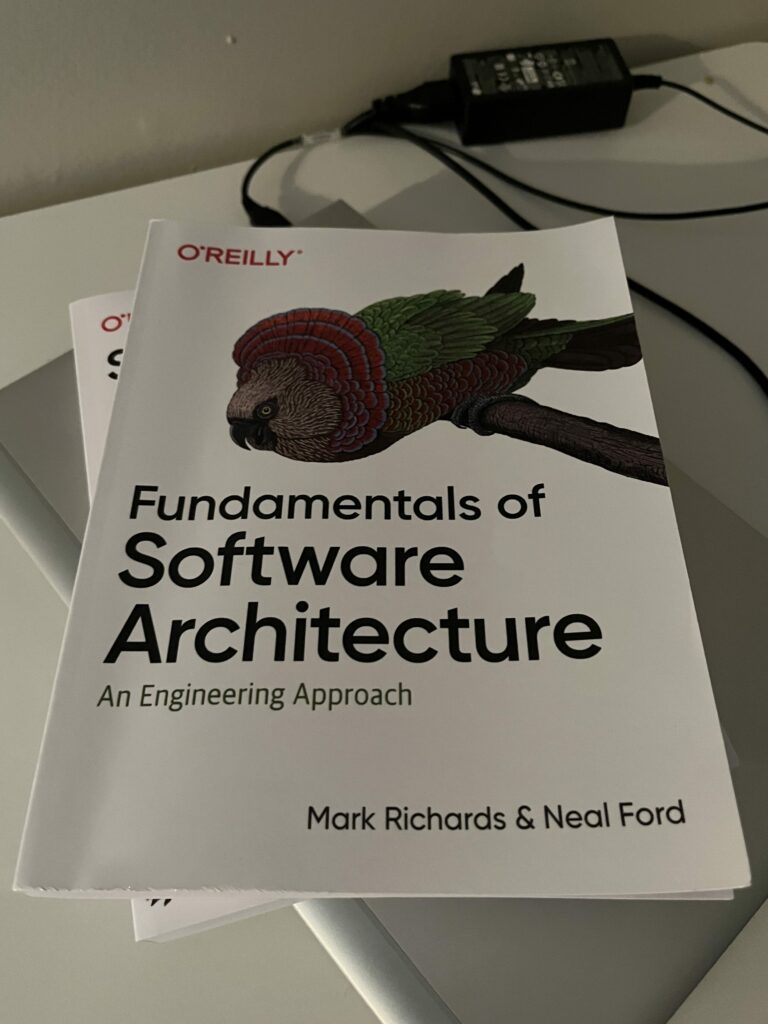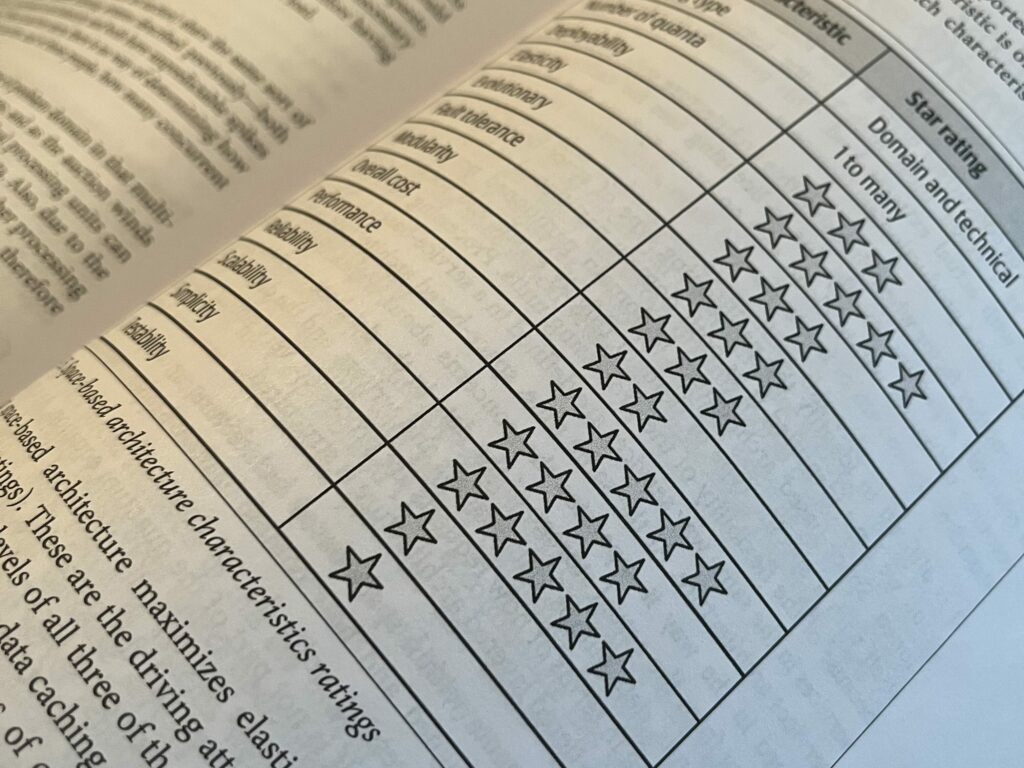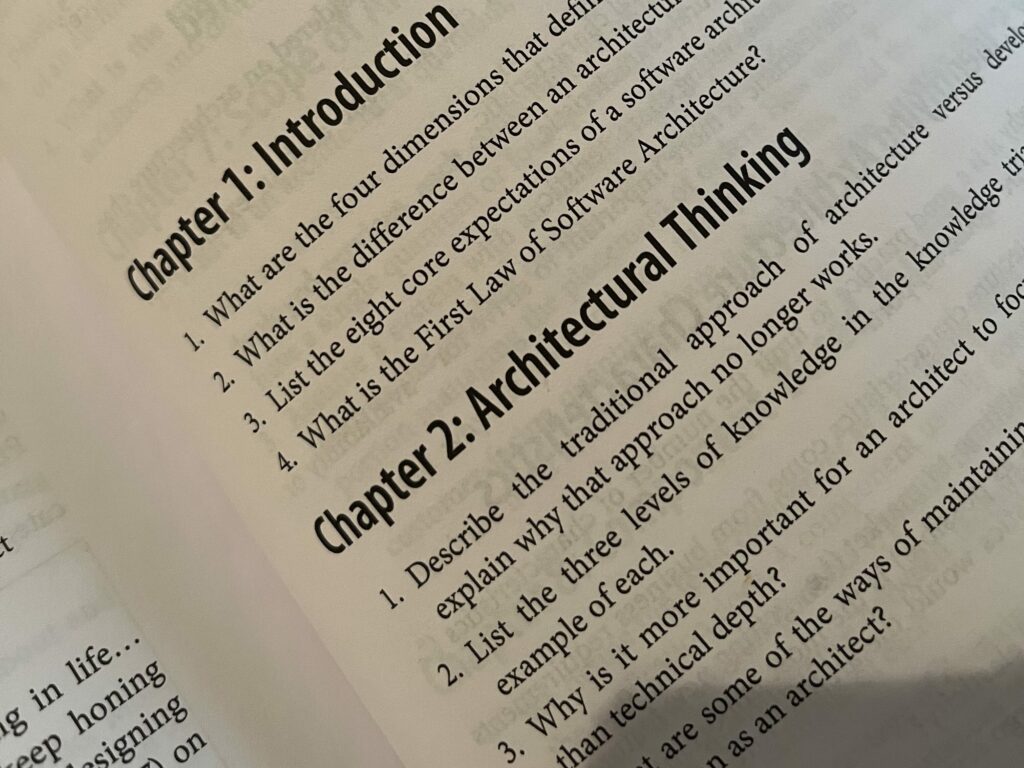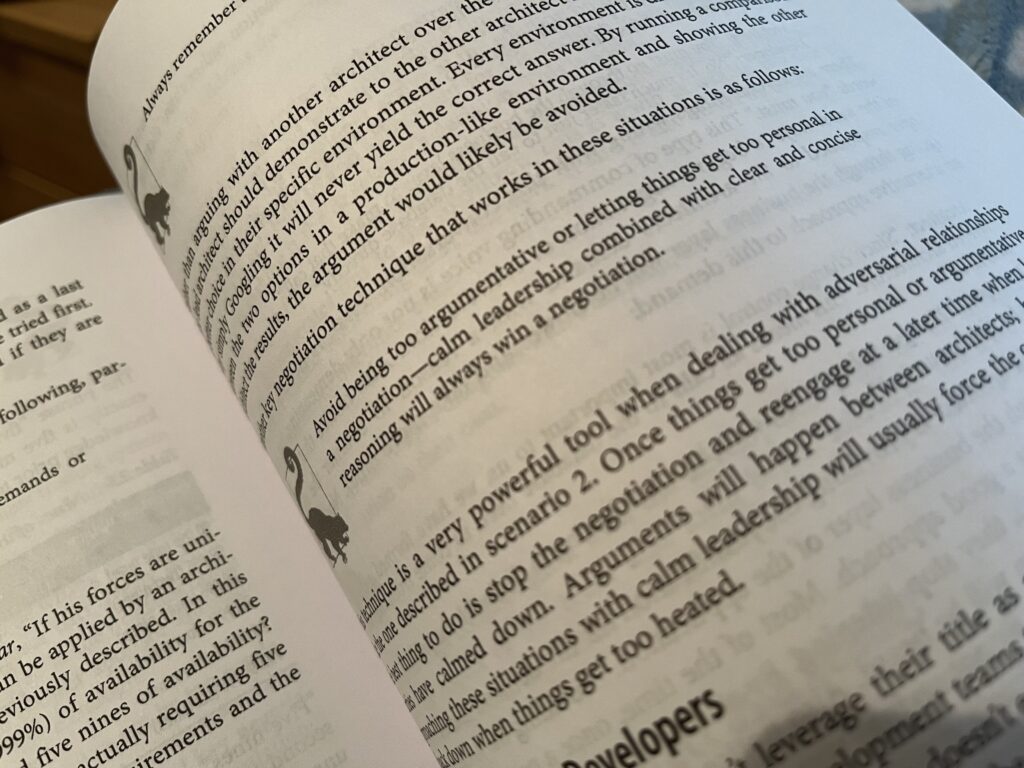As a solution architect and blogger, I had the pleasure of diving into “Fundamentals of Software Architecture: An Engineering Approach,” a book that promises to be a valuable resource for software professionals seeking to bolster their understanding of software architecture. Authored by Neal Ford and Mark Richards, this book aims to equip readers with the essential knowledge and practical insights required to excel in the domain of software architecture. Having explored its content, I am excited to share my review with the community.

The Blurb
“Fundamentals of Software Architecture” has the following blurb describing the content of the book:
Salary surveys worldwide regularly place software architecture in the top 10 best jobs, yet no real guide exists to help developers become architects. Until now. This book provides the first comprehensive overview of software architecture’s many aspects. Aspiring and existing architects alike will examine architectural characteristics, architectural patterns, component determination, diagramming and presenting architecture, evolutionary architecture and many other topics.
Mark Richards and Neal Ford – hands-on-practitioners who have taught software architecture classes professionally for years – focus on architecture principles that apply across all technology stacks. You’ll explore software architecture in a modern light, taking into account all the innovations of the past decade.
This book examines:
- Architectural patterns: the technical basis for many architectural decisions
- Components: identification, coupling, cohesion, partitioning and granularity
- Soft skills: effective team management, meetings, negotiation, presentations and more
- Modernity: engineering practices and operational approaches that have changed radically in the past few years
- Architecture as an engineering discipline: repeatable results, metrics, and concrete valuations that add rigor to software architecture
Book Structure
Part 1: Foundations of Architecture
The authors begin by introducing readers to the fundamental principles of software architecture and trying to form a definition of software architecture and the role of a software architect. The language used is clear and concise, making complex concepts accessible to readers with varying levels of experience. The chapter on architectural thinking provides invaluable insights into how architects should approach problem-solving, which sets the stage for the rest of the book.
Part 2: Architectural Styles
In this part, the book delves into common architecture patterns, such as layered, microservices, event-driven, and more. The authors provide real-world examples and case studies to illustrate the practical application of each pattern, allowing readers to grasp their strengths and weaknesses. I found this section great for weighing up the appropriateness of an architecture and how it aligns with your non-functional requirements. There are no silver bullet architectures and context and tradeoffs help you form the ideal software architecture for your given problem.

Part 3: Techniques and Soft Skills
Soft skills are a sometimes forgotten but incredibly valuable skill for a software architect. In order to be able to influence a software architecture you need to have buy in from both business and technical stakeholders. This section covers a lot of the soft skills that will enable you to successfully deliver the technical aspects of your job.
Self Assessment
Finally, the book culminates in a self assessment. This approach allows you identify core concepts throughout the book and check your understanding on them. It can be useful for identifying which sections could benefit from re-reading as there is a lot of valuable content to digest.

Pros
- Practical Focus: “Fundamentals of Software Architecture” stands out for its practical approach. Concepts are not only explained but demonstrated through real-world scenarios, providing readers with valuable insights applicable to their work.
- Appropriate for Diverse Audiences: The book caters to software professionals of various levels, from novices seeking to grasp the fundamentals to seasoned architects looking to reinforce their knowledge.
- Comprehensive Coverage: The authors leave no stone unturned, covering a wide range of architecture-related topics, making it a reliable reference guide for all things software architecture.
- Focus on Soft Skills: Discusses soft skills which are vital to your success as a software architect.
- Self Assessment: Ends with a Self Assessment to help you assess your knowledge of different chapters and allow you to revisit sections if you feel you have missed some core knowledge.
Cons
- Limited Coverage of New Trends: As is the nature of technology, new trends are constantly emerging and as such the book might not include the very latest developments in software architecture. However, the fundamental principles discussed should remain applicable and relevant.
My Opinion
“Fundamentals of Software Architecture: An Engineering Approach” is an excellent resource that deserves a spot on every software architect’s bookshelf. The authors’ deep expertise and practical approach make it a valuable companion for understanding, designing, and evaluating software architectures. Whether you are a budding software architect or a seasoned veteran, this book will undoubtedly enhance your architectural prowess and broaden your perspective on building robust and scalable software systems. Highly recommended!

Where to Buy?
Amazon is great, with reasonably quick delivery and reasonable prices. However, there is still some wait time between deciding to purchase “Fundamentals of Software Architecture: An Engineering Approach“. So if you’re wanting it now then you will want to look at purchasing on Audible or Kindle.
However, for a lot of people they love a physical copy when reading. Especially, if you are in tech you spend a lot of time on a computer so a physical copy can be a good break.
There is one thing about Audible that should convince you to give it a try! It has a free trial! Also, you can learn on the go. For example, you can listen on your morning commute, completely hands free.
Audible is an audiobooks subscription that comes with a FREE trial. You can use it if you’re not sure you want to commit to the book’s cost. The drawback is you will lose out on the visual diagrams in the book. Considering that it’s an architecture book there are quite a few of those.
Kindle gives you the immediate delivery you may be wishing for and also the ability to view all the diagrams from the book. With some digital tools you can also easily take notes on it.
You would choose Kindle if you prefer to read on a device or don’t have a preference for a physical copy of a book. Or if you have plenty of time to sit down and read the book. If you are short on time then Audible may be a better option for you.
DISCLAIMER: This blog post contains affiliate links. If you use an affiliate link to purchase an item I will receive commission from the purchase and this helps fund my blog hosting and keeps my content freely available. You will not be charged any additional fees for using the affiliate links and in some cases may actually receive a discount depending on the offer available.


